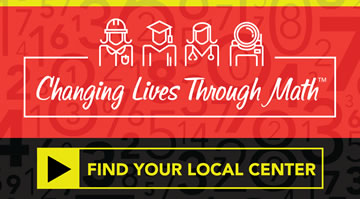
Parents often ask us what they can do to help their children understand, master, and love math. Well, this happens to be right up our alley. In fact, it’s our mission!
Our team of master educators has put together some fundamental tips and strategies that you, as parents and guardians, can use with your children. In the coming weeks and months we will share a number of recommendations in hopes that foundational knowledge can grow in your homes. By utilizing these math tips and engaging your child, you’ll help them feel more confident in math, improve their understanding, and spark their love of learning math.
The following tips are for kids in grades K-5. Parents with kids in grades 6+, check back next week for tips for you!
Counting
The most basic skills in mathematics are counting and grouping (“seeing” numbers in groups). To develop counting skills, help children learn to count from any number to any number by any number – forward and backward.
• Count by 1s, starting at 0 (0, 1, 2, 3 … 250 …)
→ then starting at any number [e.g., 28, 29, 30 … 40 …]
• Count by 2s, starting at 0 (0, 2, 4, 6 … 24 …)
→ then starting at 1 (1, 3, 5 … 25 …), starting at 15 (15, 16, 17 … 25 … 210)
→ count objects (coins, rocks, checkers …) in groups of 2
→ count how many eyes 4 people have altogether … 10 people … 25 people
→ then starting at any number [e.g., 23, 25, 27 … 49 …]
• Count by 10s, starting at 0 (0, 10, 20 … 500 …)
→ then starting at 5 (5, 15, 25 … 225 …)
→ count by 10s to get the total number of fingers 5 people have … 10 people … 23 people
→ then starting at any number [e.g., 37, 47, 57, 67 … 347 …]
• Count by 5s, starting at 0 (0, 5, 10 … 250 … )
→ then starting at any number [e.g., 13, 18, 23, 28, … 128 …]
→ use real nickels as a counting aid … count up to and over $2.00
→ count by 5s using the digits on an analog clock … count up to 60
• Count by 1⁄2 s, starting at 0 (0, 1⁄2, 1, 11⁄2, 2, 21⁄2 … 5 …)
→ count by how many half sandwiches can be made from 3 whole sandwiches … 5 … 8 … etc.
→ then by 1⁄4 s, starting at 0 (0, 1⁄4, 2⁄4 [1⁄2], 3⁄4, 4⁄4 [1], 11⁄4 …)
→ count the number of quarters in 3 basketball games … 5 games …
→ then by 3⁄4 s starting at 0 (0, 3⁄4, 6⁄4 [11⁄2], 9⁄4 [21⁄4], 12⁄4 [3] …)
• Count by 12s, starting at 0 (0, 12, 24 …120 … 240)
→ count by 12s to figure out “how many months are in 3 years,” or “how many donuts
are in 4 dozen”
• Count by 15s, starting at 0 (0, 15, 30 …120 …)
→ use real 5 and 10 valued coins as counting aids (a nickel and a dime make 15¢)
→ count up to and over $1.00
→ make reference to points on an analog clock, pointing out 3, 6, 9, and 12 as
15-minute intervals
• Count by 3s, 4s, 6s, 7s, 8s, 9s, 11s, 12s, 20s, 25s, 50s, 75s, 100s, and 150s, starting at 0
→ then starting at any number
→ use real things in the child’s world to count







